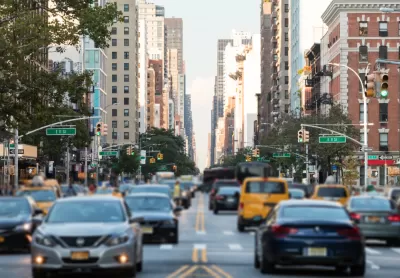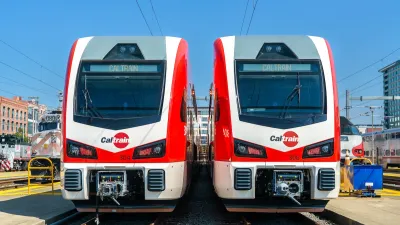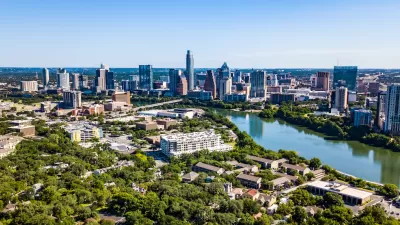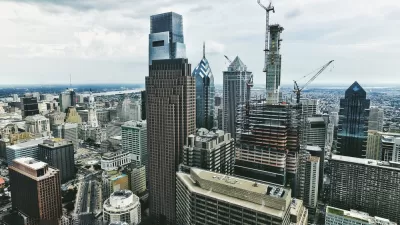A consumption-based analysis illustrates the differences in average household emissions across census tracts.

A set of maps based on University of California, Berkeley research highlights the climate impact of households in different neighborhoods, as outlined in a New York Times article by Nadja Popovich, Mira Rojanasakul, and Brad Plumer.
The data indicates that, while households in central cities tend to have lower carbon footprints thanks to access to transit and smaller homes, wealthier neighborhoods, even in dense, transit-rich cities like New York, have larger footprints than their close neighbors. “The researchers used a model, a simplified mathematical representation of the real world, to estimate the average household’s emissions in each neighborhood based on electricity use, car ownership, income levels, consumption patterns and more.”
The consumption-based analysis traces emissions to the households responsible for them rather than measuring them at the point of production. “The original idea behind the research, which began more than a decade ago, was to connect climate change with daily life, to help people understand how their choices contribute to a global problem,” according to Chris Jones, director of the CoolClimate Network at Berkeley, who developed the methodology.
The article points out that consumption results from a series of decisions, some made at the individual level, others, such as housing and transportation policy, at systemic levels. Now, Jones hopes cities can use the data to identify the most climate-friendly policies “by, for example, encouraging developers to build more housing in neighborhoods where people don’t need cars to get around or helping households in suburbs more quickly adopt cleaner electric vehicles.”
FULL STORY: The Climate Impact of Your Neighborhood, Mapped

Alabama: Trump Terminates Settlements for Black Communities Harmed By Raw Sewage
Trump deemed the landmark civil rights agreement “illegal DEI and environmental justice policy.”

Planetizen Federal Action Tracker
A weekly monitor of how Trump’s orders and actions are impacting planners and planning in America.

The 120 Year Old Tiny Home Villages That Sheltered San Francisco’s Earthquake Refugees
More than a century ago, San Francisco mobilized to house thousands of residents displaced by the 1906 earthquake. Could their strategy offer a model for the present?

San Francisco Opens Park on Former Great Highway
The Sunset Dunes park’s grand opening attracted both fans and detractors.

Oregon Legislature to Consider Transit Funding Laws
One proposal would increase the state’s payroll tax by .08% to fund transit agencies and expand service.

Housing Vouchers as a Key Piece of Houston’s Housing Strategy
The Houston Housing Authority supports 19,000 households through the housing voucher program.
Urban Design for Planners 1: Software Tools
This six-course series explores essential urban design concepts using open source software and equips planners with the tools they need to participate fully in the urban design process.
Planning for Universal Design
Learn the tools for implementing Universal Design in planning regulations.
Clanton & Associates, Inc.
Jessamine County Fiscal Court
Institute for Housing and Urban Development Studies (IHS)
City of Grandview
Harvard GSD Executive Education
Toledo-Lucas County Plan Commissions
Salt Lake City
NYU Wagner Graduate School of Public Service





























